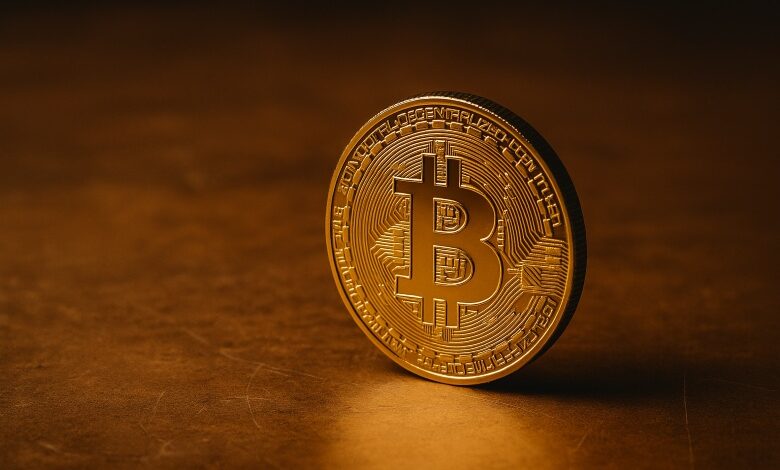Bitcoin’s Final Million: Counting Down to True Digital Scarcity

Bitcoin has reached a new all-time high of $122,413 per BTC (as of July 14, 2025), marking yet another milestone in its remarkable journey from fringe experiment to financial pillar. But beyond the headlines, the real story is unfolding around Bitcoin’s final million bitcoins — a moment that redefines how we measure scarcity and value in the digital age.
As of today, a total of 19,891,934 BTC have been mined. That means Bitcoin is just 108,066 BTC away from crossing its next monumental threshold: 20 million bitcoins mined, expected around March 15, 2026, at block height 940,217.
This isn’t just another milestone. It marks the beginning of Bitcoin’s final million era – a shift from counting what’s been created to counting down what remains.
From Counting Up to Counting Down
For over 16 years, the Bitcoin community has asked: “How many bitcoins have been mined so far?”
But as we approach 20 million, the question transforms to: “How many bitcoins remain to be mined?”
This shift is more than semantics. It reshapes how we think about Bitcoin:
- Psychologically:
Scarcity becomes real, tangible, and urgent. Just like a collector eyeing the last prints of a rare piece, knowing only 1 million BTC remain to be created, over the next 115 years, makes each existing coin feel more precious. - Economically:
Bitcoin’s issuance rate is slowing exponentially. The final million coins represent less than 5% of total supply, mined over a century. The days of meaningful new BTC inflow are ending, cementing its role as a store of value rather than an inflationary currency. - Culturally:
Bitcoin graduates from being an emerging monetary experiment to becoming a digital monument – an artifact of our era, with scarcity coded immutably into its DNA.
The Math Behind Bitcoin’s Final Million
Bitcoin’s design enforces a 21 million cap. When it launched in 2009, miners earned 50 BTC per block. Every 210,000 blocks (~4 years), that reward halves:
- 2012: 25 BTC
- 2016: 12.5 BTC
- 2020: 6.25 BTC
- 2024: 3.125 BTC (current reward)
At the current pace, with ~450 BTC mined per day post-halving, the 20 million BTC milestone is now expected around March 15, 2026, at approximately block height 940,217.
But here’s the kicker:
While it took 17 years to mine the first 19.9 million BTC, it will take another 115 years to mine the final million, with diminishing rewards eventually reaching fractions of a satoshi before issuance ends in 2140.
Mining Rewards to Fees: The Changing Economics for Miners
Bitcoin miners today earn their income from two sources: block rewards (newly minted BTC) and transaction fees. Over time, block rewards keep shrinking due to halvings, while fees become a larger share of miner revenue.
On April 20, 2024, the day of the most recent halving, something historic happened: individual blocks saw transaction fees exceed the block subsidy for the first time ever. While daily fees didn’t yet surpass total rewards, it was a clear glimpse into Bitcoin’s future – a future where miners rely on fees to sustain the network.
Miners: The Next 10 Years
As Bitcoin enters its final million era, miners are facing a decade of transformation. With block rewards halving twice more by 2035, their income from newly minted bitcoins will shrink dramatically. But mining isn’t going away. In fact, it will become more competitive and industrial.
Over the next ten years, miners will double down on efficiency, upgrading to the most advanced ASIC hardware and securing the cheapest or cleanest energy sources globally. Many will diversify beyond mining, pivoting into AI data center hosting, grid balancing services, or cloud mining for smaller players, turning their energy strategies into multi-revenue businesses. Mining profitability will increasingly depend on transaction fees as block rewards diminish, pushing miners to support Bitcoin’s broader ecosystem growth to sustain a healthy fee market.
By 2035, block rewards will drop below 0.4 BTC per block, forcing a complete reliance on operational excellence and fee income. Only miners who adapt technologically, integrate deeply with the energy sector, and diversify smartly will remain in business. Those who fail to pivot risk being pushed out entirely in this next chapter of Bitcoin’s evolution.
“Crypto mining is here to stay, and it’s entering a powerful new phase that reflects the growing adoption of crypto assets around the world. This era will be a race for ultimate efficiency, where success means deploying the most advanced hardware and securing the planet’s cheapest, cleanest energy. We’ll also see miners transform their operations, branching out from mining to create new revenue from high-demand fields like AI data hosting and cloud services. It’s what we are doing at Phoenix as we look to consolidate our position as a top 5 bitcoin miner while also becoming a major player in AI.
A fundamental shift in mining economics drives this transformation: as automatic block rewards decline, profitability will hinge on transaction fees. This gives us a direct stake in the ecosystem’s success and makes us key partners in building a healthy, widely-used network that builds the future digital economy,” said Munaf Ali, Group CEO of Phoenix.
Lost Coins: How Many Bitcoins Are Gone Forever?
Estimates suggest 3–4 million BTC are lost forever, due to forgotten private keys, thrown-away hard drives, or coins sent to burn addresses.
That means: Of the 21 million BTC, only ~17–18 million are realistically accessible.
Every lost bitcoin effectively increases the scarcity of the remaining supply, amplifying its value proposition as a truly finite digital asset.
Looking Into Bitcoin’s Future
By 2045, Bitcoin will likely be:
- A state-level strategic reserve, held by nations alongside gold.
- A base-layer settlement network for institutional and cross-border flows.
- An ultimate store of value, with near-zero issuance validating its monetary thesis.
And by 2140, when the last satoshi is mined, Bitcoin will stand as: A digital monument to the idea that rules, not rulers, can govern money.
Its blockchain – an eternal ledger of global transactions since 2009 – will outlive generations, acting as a foundation for a future financial system built on transparency, immutability, and engineered scarcity.
What Does This All Mean
As Bitcoin trades at an all-time high above $122,000, it’s tempting to focus only on price. But the real story lies in the clock winding down on issuance. We are no longer counting what’s been created. We are counting what remains — and what that remaining scarcity means for the world. If gold miners knew the last gram would take 115 years to unearth, what would its price be today?
The countdown to Bitcoin’s final million bitcoins changes everything. It reframes how we view money, scarcity, and long-term value in a digital world. Bitcoin has answered that question in code.





